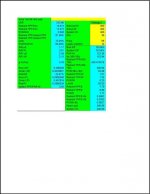This thread will be for anyone needing help with knna's and Beta Test Teams data materials and spread sheets to compare and utilize bulbs and such.
Hopefully the Moderators can move a few posts from BTT's Threads on several issues. Here are links to various threads where data can be found along with several spread sheets.
Cannabis absorptance spectra:Calculated and compared.
https://www.icmag.com/ic/showthread.php?t=293045
[FONT=Arial, Helvetica, sans-serif]Action spectra and RQEs weighted with Cannabis absorptance[/FONT][FONT=Arial, Helvetica, sans-serif] [/FONT]
https://www.icmag.com/ic/showthread.php?t=295933
[FONT=Arial, Helvetica, sans-serif]Various approximate RQE of Cannabis (graphed)[/FONT]
https://www.icmag.com/ic/showthread.php?p=6718314
Link to knna's last spread sheet and info on using it.
http://buymarijuanaseeds.com/community/threads/bulb-analyzer-tool-actualized.117933/
I made this thread so anyone wanting to learn how to utilize this data can perhaps have an easier time doing so for all those whom like me needs a little help.
I'll be adding more later as we get some posts moved.
Hopefully the Moderators can move a few posts from BTT's Threads on several issues. Here are links to various threads where data can be found along with several spread sheets.
Cannabis absorptance spectra:Calculated and compared.
https://www.icmag.com/ic/showthread.php?t=293045
[FONT=Arial, Helvetica, sans-serif]Action spectra and RQEs weighted with Cannabis absorptance[/FONT][FONT=Arial, Helvetica, sans-serif] [/FONT]
https://www.icmag.com/ic/showthread.php?t=295933
[FONT=Arial, Helvetica, sans-serif]Various approximate RQE of Cannabis (graphed)[/FONT]
https://www.icmag.com/ic/showthread.php?p=6718314
Link to knna's last spread sheet and info on using it.
http://buymarijuanaseeds.com/community/threads/bulb-analyzer-tool-actualized.117933/
I made this thread so anyone wanting to learn how to utilize this data can perhaps have an easier time doing so for all those whom like me needs a little help.
I'll be adding more later as we get some posts moved.





